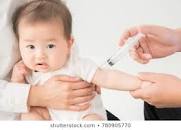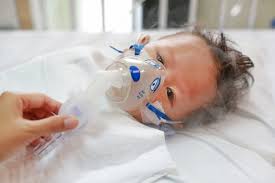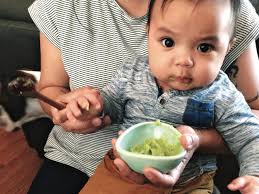 It is very common question and very common mistakes by parents,regarding when and how a solid food is introduced to baby.All babies should exclusively be breast fed right from birth ,preferably starting within 30-60 minutes of birth till the age of 6 months.Some mother says that since the child is born through caesarean section(OPERATION),I have started the baby to feed through bottle with formula milk.This is not the correct reason to start formula feeds.Milk production is very less during initial 3 days of child birth but it is sufficient for the baby and it is highly nutrItious and immunobooster to the child.Milk production begins only when the baby starts sucking.If the baby sucks more ,the milk production will be more,if the child sucks less,the milk production will be less and if the child does not suck,there will be no milk production.
It is very common question and very common mistakes by parents,regarding when and how a solid food is introduced to baby.All babies should exclusively be breast fed right from birth ,preferably starting within 30-60 minutes of birth till the age of 6 months.Some mother says that since the child is born through caesarean section(OPERATION),I have started the baby to feed through bottle with formula milk.This is not the correct reason to start formula feeds.Milk production is very less during initial 3 days of child birth but it is sufficient for the baby and it is highly nutrItious and immunobooster to the child.Milk production begins only when the baby starts sucking.If the baby sucks more ,the milk production will be more,if the child sucks less,the milk production will be less and if the child does not suck,there will be no milk production.
Solid foods should be started at the completion of 6 months of age.It should be noted by parents that the child is able to hold his or her head before starting solid foods.
It can be started with any food available in the house but it should be in purees form.There is sufficient evidence from agriculture based families that they start with any grain available to them like corn,millets,rice,wheat.What they do it that,they make the grain in powder form and mix it with animal milk and feed the baby.We have sufficient evidence from hunter and gatherers family that they start giving meat that is made like purees.
So,it is safe to start with any food items like rice,millets,banana,apple,wheat but it should be in the form of purees.It is a good practice that mother should taste the food before feeding the baby.If mother can propel the food placed over tongue through the roof of mouth towards the back of tongue very easily,it can be given to baby safely.
It should be noted that ,it is the time, just to start the baby on solid foods,not to completely feed the baby with solid foods.The staple food for the baby is still breast milk.So,give the starting food 2-3 times daily and continue one item for 1 week then change to another item.
Some baby may reject the food .In such circumstances,try giving the food with spoon 3 times before stop giving for that session.It has been seen that on third attempt most babies accept the feed.If the baby tries to hold the spoon,let the baby do it,and you can feed them with another spoon.
NOTE:The baby should be seated upright as shown in picture at the outset, and food should not be sticky or lumpy to avoid the chance of chocking.
SPICY AND FLAVOURED FOOD:These food items can be given at this age of weaning the child.Since the child is already exposed to these spices and flavours in food through breast milk or even before birth in the uterus through the blood of mother,the child accepts it and there is no harm to the child.
ALLERGIC FOODS:Allergic food items can safely be started at this age and moreover,introducing allergic foods like egg,peanuts,fishes at this age may lessen the chance of developing allergy later in life.
NOTE:If the elder sibling is allergic to some food item,it is mandatory to get the baby tested for allergy before giving that food.
Food items should be changed every week and all kinds of foods should be introduced by the age of 9 months.It has been observed that by doing so,the child accepts all kinds of food items later in life.
Breast feed should be continued till the age of 2-3 years.It has been observed that the child who continue to breast feed till 2-3 years ,accepts all home made foods easily in comparision to those who continue breast feed for lesser period.
The quantity of solid foods should be increased gradually and by the age of 9 months, some lumpy foods which dissolves easily in mouth or mashed foods should be given to baby.Teeth are not erupted completely at this age but the child learns to manage food items with gums and propel towards back of tongue.By doing so ,the chewing muscles also gain strength.
NOTE;There should not be particles of food in mouth after getting broken in mouth by baby to avoid choking.
Honey should not be given before 1 year of age due to risk of BOTULISM
It is a common practice in India to start weaning with DAL WATER(Pulse water) It is a wrong practice.Start with whole DAL in the form of purees,(any dal)then give khichri after 1 week,then give rice and pulse after 1 week like that.
you can make powder of multiple grains and give one grain mixed with breast milk or animal milk at a time then add another after 1 week and gradually give multiple grains after 4-5 weeks . Fruits and vegetables should be given in the same manner.
REFERENCES:
Abrams EM and Becker AB. 2015. Food introduction and allergy prevention in infants. CMAJ. 187(17):1297-301.
American Academy of Pediatrics. 2017. Starting Solid Foods. Retrieved from https://www.healthychildren.org/English/ages-stages/baby/feeding-nutrition/Pages/Switching-To-Solid-Foods.aspx (12/28/2018).
American Academy of Pediatrics Committee on Nutrition. 2000. Hypoallergenic infant formulas. Pediatrics. 106(2 Pt 1):346-9.
Cameron SL, Taylor RW, Heath AL. 2015. Development and pilot testing of Baby-Led Introduction to Solids–a version of Baby-Led Weaning modified to address concerns about iron deficiency, growth faltering and choking. BMC Pediatr. 15:99.
Coulthard H, Harris G, Emmett P. 2009. Delayed introduction of lumpy foods to children during the complementary feeding period affects child’s food acceptance and feeding at 7 years of age. Matern Child Nutr. 5(1):75-85.
Daniels L, Heath AL, Williams SM, Cameron SL, Fleming EA, Taylor BJ, Wheeler BJ, Gibson RS, Taylor RW. 2015. Baby-Led Introduction to SolidS (BLISS) study: a randomised controlled trial of a baby-led approach to complementary feeding. BMC Pediatr. 15:179.
de Lauzon-Guillain B, Jones L, Oliveira A, Moschonis G, Betoko A, Lopes C, Moreira P, Manios Y, Papadopoulos NG, Emmett P, Charles MA. 2013. The influence of early feeding practices on fruit and vegetable intake among preschool children in 4 European birth cohorts. Am J Clin Nutr. 98(3):804-12.
Dogan E, Yilmaz G, Caylan N, Turgut M, Gokcay G, Oguz MM. 2018. Baby-led complementary feeding: Randomized controlled study. Pediatr Int. 60(12):1073-1080.
Du Toit G, Foong RM, and Lack G. 2016. Prevention of food allergy – Early dietary interventions. Allergol Int. 65(4):370-377.
Forestell CA. 2017. Flavor Perception and Preference Development in Human Infants. Ann Nutr Metab. 70 Suppl 3:17-25.
Forestell CA and Mennella JA. 2007. Early determinants of fruit and vegetable acceptance. Pediatrics 120(6):1247-1254.
Forestell CA and Mennella JA. 2017. The Relationship between Infant Facial Expressions and Food Acceptance. Curr Nutr Rep. 6(2):141-147.
Harris G and Mason S. 2017. Are There Sensitive Periods for Food Acceptance in Infancy? Curr Nutr Rep. 6(2):190-196.
Howcroft R. 2013. Weaned Upon A Time: Studies of the infant diet in prehistory. Stockholm.
Ierodiakonou D, Garcia-Larsen V, Logan A, Groome A, Cunha S, Chivinge J, Robinson Z, Geoghegan N, Jarrold K, Reeves T, Tagiyeva-Milne N, Nurmatov U, Trivella M, Leonardi-Bee J, Boyle RJ. 2016. Timing of Allergenic Food Introduction to the Infant Diet and Risk of Allergic or Autoimmune Disease: A Systematic Review and Meta-analysis. JAMA. 316(11):1181-1192
Liem JJ, Huq S, Kozyrskyj AL, Becker AB. 2008. Should Younger Siblings of Peanut-Allergic Children Be Assessed by an Allergist before Being Fed Peanut? Allergy Asthma Clin Immunol. 4(4):144-9.
Mennella JA, Reiter AR, Daniels LM. 2016. Vegetable and Fruit Acceptance during Infancy: Impact of Ontogeny, Genetics, and Early Experiences. Adv Nutr. 7(1):211S-219S.
Mura Paroche M, Caton SJ, Vereijken CMJL, Weenen H, Houston-Price C. 2017. How Infants and Young Children Learn About Food: A Systematic Review. Front Psychol. 8:1046.
Okubo H, Miyake Y, Sasaki S, Tanaka K, Hirota Y. 2016. Feeding practices in early life and later intake of fruit and vegetables among Japanese toddlers: the Osaka Maternal and Child Health Study. Public Health Nutr. 19(4):650-7.
West C. 2017. Introduction of Complementary Foods to Infants. Ann Nutr Metab. 70 Suppl 2:47-54.
title image of baby touching hands in high chair by lmnop88a / flickr
imagine of baby foods by Frédérique Voisin-Demery / flickr
image of baby making funny face while eating by Fimb /flickr
image of baby turning away from food by Abigail Batchelder /flickr
image of baby grabbing spoon by César Rincón / flickr
Content last modified 1/2019
 OIL massage is an important part of giving health to babies.
OIL massage is an important part of giving health to babies. Sleep is very important state of health.
Sleep is very important state of health.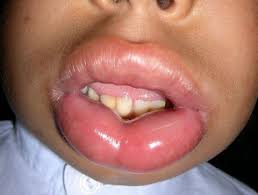 Hereditary angioedema(HAE) is a rare disorder caused by deficiecny of C1 –inhibitor(C1- INH) since birth.
Hereditary angioedema(HAE) is a rare disorder caused by deficiecny of C1 –inhibitor(C1- INH) since birth.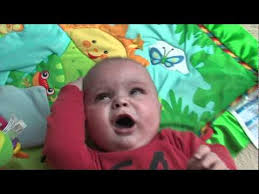 Breath holding spells is not uncommon in children.
Breath holding spells is not uncommon in children.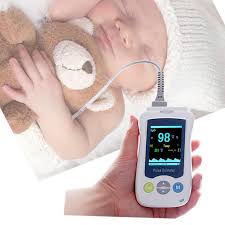 Many patients suffering from COVID 19 are hypoxemic but not in distress and breathing comfortably in room air.This stage is called happy hypoxia.Hpoxemia is detected only after high index of suspician leads to SpO2 monitoring.
Many patients suffering from COVID 19 are hypoxemic but not in distress and breathing comfortably in room air.This stage is called happy hypoxia.Hpoxemia is detected only after high index of suspician leads to SpO2 monitoring. It is very common question and very common mistakes by parents,regarding when and how a solid food is introduced to baby.All babies should exclusively be breast fed right from birth ,preferably starting within 30-60 minutes of birth till the age of 6 months.Some mother says that since the child is born through caesarean section(OPERATION),I have started the baby to feed through bottle with formula milk.This is not the correct reason to start formula feeds.Milk production is very less during initial 3 days of child birth but it is sufficient for the baby and it is highly nutrItious and immunobooster to the child.Milk production begins only when the baby starts sucking.If the baby sucks more ,the milk production will be more,if the child sucks less,the milk production will be less and if the child does not suck,there will be no milk production.
It is very common question and very common mistakes by parents,regarding when and how a solid food is introduced to baby.All babies should exclusively be breast fed right from birth ,preferably starting within 30-60 minutes of birth till the age of 6 months.Some mother says that since the child is born through caesarean section(OPERATION),I have started the baby to feed through bottle with formula milk.This is not the correct reason to start formula feeds.Milk production is very less during initial 3 days of child birth but it is sufficient for the baby and it is highly nutrItious and immunobooster to the child.Milk production begins only when the baby starts sucking.If the baby sucks more ,the milk production will be more,if the child sucks less,the milk production will be less and if the child does not suck,there will be no milk production.